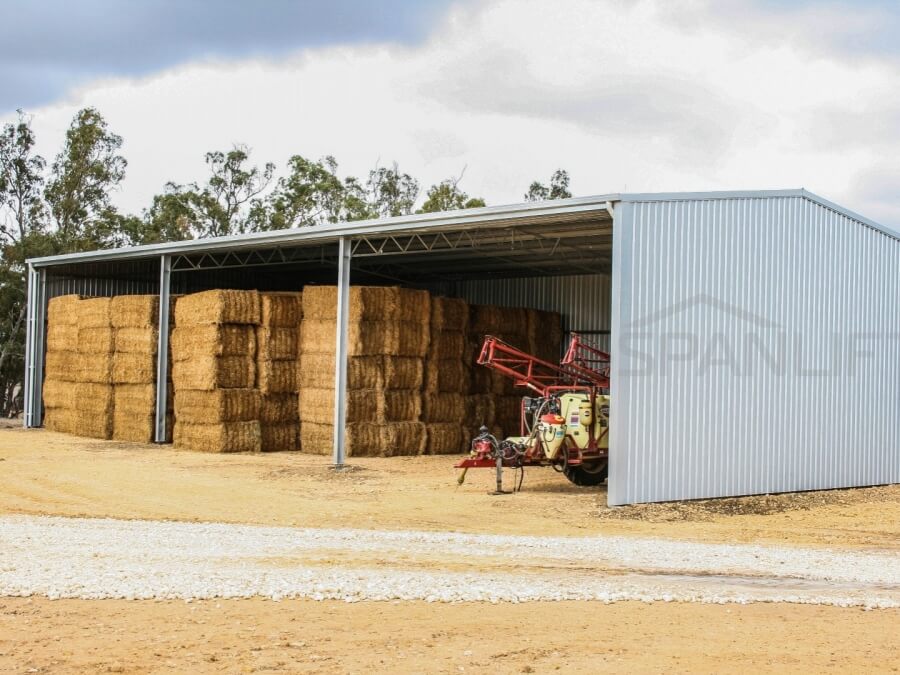Are you planning to build a hay shed or fodder shed on your property? There are many factors that need to be taken into consideration when it comes to building any type of shed.
The team at Spanlift have been working collaboratively with both hay producers and exporters in South Australia, and with our experience we have found what are some of the key points to consider when building a shed on your property.
1. Bale Storage
The bale storage is the overall determining factor for many variances with the hay shed. This includes dimensions, location, stormwater requirements, council specifications and insurances.
The type of bales can have an influence on the overall dimensions of the bale storage. Rectangular bales require less space compared to round bales & are easier to stack. Larger hay bales require a shed with wider bays for access compared to smaller hay bales.
It is important to take into account the future & think about what will be suitable for 5 years time instead of just thinking about what is needed now.
The Spanlift team is able to calculate & design the right shed to maximise bale storage to ensure getting the best value for your dollars.
2. Location
The dimensions of the hay shed can have an effect on where exactly you want your hay shed located. When thinking about the location of your new shed, consideration must also be given to whether you’ll be able to access it in extreme weather conditions, whether the location will provide decent drainage and whether it will have access to all-weather roads. Will livestock be nearby? And if so, how will you keep animals out?
During construction there needs to be enough room around the site to be able to manoeuvre cranes and scissor lifts. As most prevailing weather conditions are from the south and west, Spanlift recommends fodder sheds with one open side face east to minimise the inclement weather the hay is exposed to.
3. Loading and Unloading
How will hay bales be loaded and unloaded to and from the hay shed? The type of machinery used to load & unload hay bales can impact the overall dimensions of the shed & how best to set up your hay shed so that loading and unloading is easy and efficient.
Spanlift hay sheds are clear span making loading and unloading easier and with the added protection of bale bumpers to the rear wall and in round bale hay shed side wall to make loading that little easier. Consider carefully the hardstand area you will need in front of your hay shed for truck movements. The hardstand area requires careful consideration as to make sure all water runs away from the shed and you have ample room for movement around trucks.
4. Stormwater Storage
Water is a very valuable resource, especially in Australia. Depending on the dimensions of your hay shed, you may be able to harvest thousands of litres of rainwater each year. In order to maximise water collection, Spanlift in conjunction with one of our suppliers has a guttering system allowing the removal of all intermittent downpipes and all stormwater to flow to the end of the shed where water is to be collected.
5. Council Approvals
Getting your hands on a council permit can be a tedious process. We recommend that you make use of government resources such as Plan SA to clarify any rules you may need to take into consideration.
From there you can create your plans and send them through to your local council. When building your shed with Spanlift, we can provide you with all the necessary building plans and assist you in the council approval process.
Looking for a top-quality hay shed or fodder shed in South Australia? Call us on 1300 234 321 to speak to one of our experts, or click here to submit a quote request.



